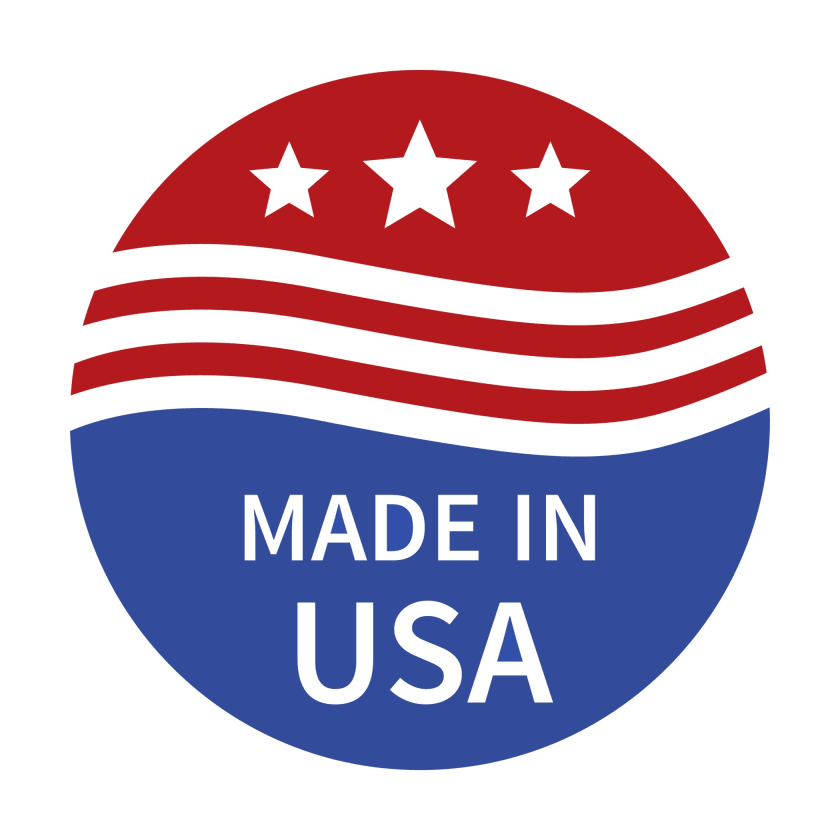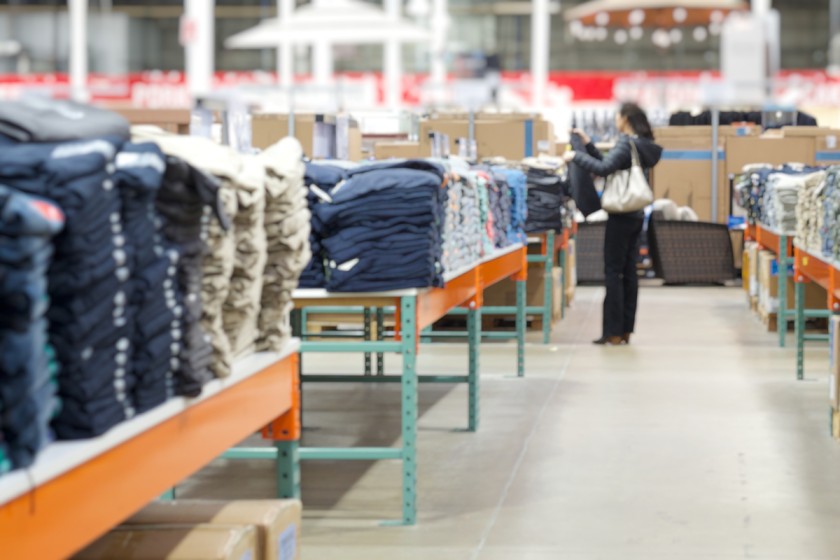Top Ways to Source Made-in-USA Clothing for your Brand



There are numerous variables when it comes to starting a clothing company. Starting with a strong foundation and high-quality materials will help you stand out among fashion brands. Fabric types include knit, weaved, yarn-dyed, and printed fabrics. There are also several knitting, weaving, and printing techniques.
The first stage in the design process for many fashion designers is selecting the fabric. The next is to create clothing out of that fabric. Choosing the proper material for your goods can be difficult. In this article, we’ll look at the methods to source made-in-USA clothing from other manufacturers and providers and the questions to ask while choosing fabric for your clothing line.
What is Cloth Sourcing?
Cloth sourcing is the industry term for identifying a supplier that sells the cloth you require. Fabric is obtained in this manner by fashion designers. They source, acquire or purchase it – from a variety of vendors.
Unless you've been in the world of fashion for some time, understanding where to get fabric can be a daunting task. Whether you're establishing a brand or a new freelancer, starting it as a total newbie with no expertise can feel daunting.
When it comes to choosing made in USA clothing for your brand, understanding what you're speaking about will build up trust and more to deliver your clientele. You'll save time, resources, and hassles throughout implementation, and you will be able to communicate enough for providers and businesses effectively.
How can you source made-in clothing for your clothing brand?

You can see and touch the fabrics when you source made in USA clothing in person at fabric trade shows. You can, however, search fabric manufacturers and wholesalers online and order fabric hangers (also known as swatches or samples) to inspect in your studio or office. You may be charged a cost based on the fabric mill, usually between $5 and $10 per fabric hanger.
- Begin with counter sourcing
If you are new to product creation, counter sourcing is a terrific approach to ensure you acquire the exact clothing you need without getting bogged down in technical specifics and industry lingo. Someone who is more experienced or has a background in textiles sometimes knows exactly what they want. For example, it could be difficult to gauge the shirt's fabric, whether it is cotton, silk, etc., and know the yarn size, knit, etc. For most newbies, it can be challenging to know everything, so the best they can begin with is counter sourcing.
- Fabric/clothing can be seen at trade exhibits
Fabric trade exhibitions may be extremely overwhelming. There are rows and rows of dealer booths, often countless, to explore in a few hours. Before the trade fair, do some research on the exhibiting fabric mills and establish a list of your top ten.
Allow for a few more minutes if you come across fabric vendors that you didn't uncover during your online search.
You might begin by attending the following fabric trade shows for made in USA clothing:
- DG Expo is better for small-quantity fabric orders, as many of the fabric companies exhibiting are situated in the United States or have showrooms there. They have one of the best providers of fabrics made in USA clothing.
- Texworld is a larger trade fair with more exhibitors. Several fabric suppliers exhibiting at Texworld have mills in China, India, and other countries.
- Source your clothing online
If you cannot attend a trade show, the next best alternative is to browse trade show websites for fabric suppliers who suit your criteria. Many, if not all, clothing companies now feature a catalogue on their website. You can browse at your pace and then order fabric headers (also known as hangers) to review in the comforts of your workplace.
- Consider a factory that offers a Full Production Package (FPP)
If you're a new firm searching for assistance with various manufacturing concerns, an FPP manufacturer could be a good fit. This type of manufacturer will assist you throughout the procedure, from concept to final product, and can acquire fabrics through its extensive network. This option frequently includes a materials library from which to choose, making the production process quick and simple.
- Explore several types of cloth manufacturers for the perfect made in USA clothing
Your clothing selection is critical not just for your assortment but also for your fashion brand. Finally, the cloth you select will influence your garment's aesthetic, comfort, fitting, and function. Before selecting a fabric provider, you should investigate all of your sourcing alternatives to acquire high-quality fashion fabric at an affordable price.
i) Fabric mills
Fabric mills, referred to as textile mills) are facilities that transform raw materials into threads to create fabric. The most prevalent procedures are to weave and knit, which are followed via printing and dyeing for the cloth to be made into garments like t-shirts, blazers, trousers, and more at a mill. Cloth mills are frequently wholesale distributors that specialise in specific materials like cashmere, silk, and leatherette.
Cloth mills are great places to go if you want a custom-made cloth. However, they usually have higher minimum order quantity (MOQ) and a lengthier lead time as a result of this.
ii) Converters
Some cloth factories do not handle the complete process of raw material to finished cloth. This is when a converter comes into dyeing, bleaching, and printing the unfinished fabric before selling it to customers.
iii) Fabric agents and representatives
If you prefer to purchase wholesale cloth or place large purchases, you can do so through agents and salespeople. These suppliers function as a go-between for mills or manufacturers, understanding your demands and streamlining the procurement procedure. Many agents and agents work with various fabric mills and expertise in global sourcing, saving you time and maximising efficiency. Keep in mind that they frequently operate on commission, which may result in greater charges.
iv) Fabric stores and jobbers
Jobbers buy leftovers from cloth mills, textile manufacturers, and fashion designers. They keep material on hand to sell at a reduced minimum to businesses, start-ups, designers, and other manufacturers. Cloth stores are similar in that you can explore millions of cloth swatches for buying a little quantity that fits your budget or receive inspiration for your next fashion design. Since restocking the same cloth may be impractical, jobbers and retailers are best suited for one-time jobs.
Sourcing Places to Avoid For Your Clothing Line

Let us have a look at a few of the outsourcing mistakes that must be avoided;
- Project Runway has a luxurious aura to it, and it could be your only exposure to the world of trends and fashions. However, the trouble is that it's a little surreal.
- You don't want to buy fabric from the garments district or your regional craft shop. You're paying complete retail price, which is at minimum double the amount you should be paying.
- Retail businesses contain markups that you and your clients do not have to pay.
Ways to avoid sourcing mistakes
Another method to correctly source is to avoid costly mistakes. This can be accomplished by asking the appropriate questions. It's easy to get carried away with the general concept of how the apparel should look. However, omitting critical elements may impede production.
Take a look at some of the most important questions to ask when sourcing clothing:
- Availability of inventory: Not all fabrics are available at all times. Some solutions have been popular for a long time, while others come and go with the seasons. Checking the sort of material and its availability is critical for maintaining the consistency of your garment line. Nothing is worse than having a best-seller only to discover that the factory no longer carries its fabric.
Customers prefer consistency, so make certain that there are some guarantees, especially when producing signature collections.
- Timelines for delivery: The lead time for your cloth selection is an important parameter to consider in the production plan. Some clothes/ fabrics will need to be manufactured to order by a fabric mill, which could take weeks or months. It is critical to account for this in terms of timing.
- Order amounts must be met: Order quantities can differ depending on the fabric provider. Some materials must be ordered in big quantities, while others can allow lesser demands. However, it is worth noting that low minimum order amounts frequently cost substantially more.
- Costings: As previously stated, the quantity of cloth ordered has a significant effect on the amount of the fabric. The more difficult it is to make and supply a cloth, the more expensive it becomes. Aside from that, different types and origins of material have distinct values.
- Width of the fabric: Fabrics are rarely available in a universal width. Each is distinct, with handmade materials providing thinner widths and a wholesale supplier providing wider sections. This will impact the cost and how much you can accommodate for each section.
Conclusion
We hope this essay has given you a clear understanding of the phases, systems, and processes involved in sourcing cloth for your clothing brand. If this is all new to you, it may appear daunting at first; but take one step at a time and build from there. Whatever type of clothing line you want to start—whether it's just your own path of t-shirts or an entire inventory of cut and sew garments—the information and details in this handbook should help you get there.
Need help with your clothing brand? Send your queries about clothes manufacturers or sourcing to Fashinza, and our executives will get back to you.



















